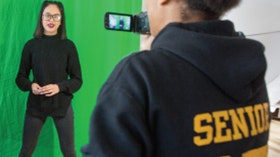Homepage
•
Learning Library
•
Blog
•
Standards Spotlight: Innovative approaches inspire students to be creative communicators
Expand breadcrumbs
Expand breadcrumbs
- Learning Library
- Blog
- Standards Spotlight: Innovative approaches inspire students to be creative communicators
- Homepage
- •
- Learning Library
- •
- Blog
- •
- Standards Spotlight: Innovative approaches inspire students to be creative communicators
Standards Spotlight: Innovative approaches inspire students to be creative communicators
By Kristin Harrington
June 19, 2018








